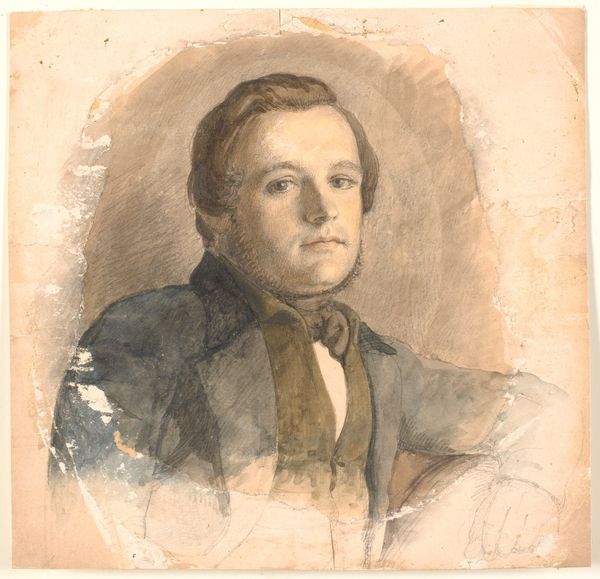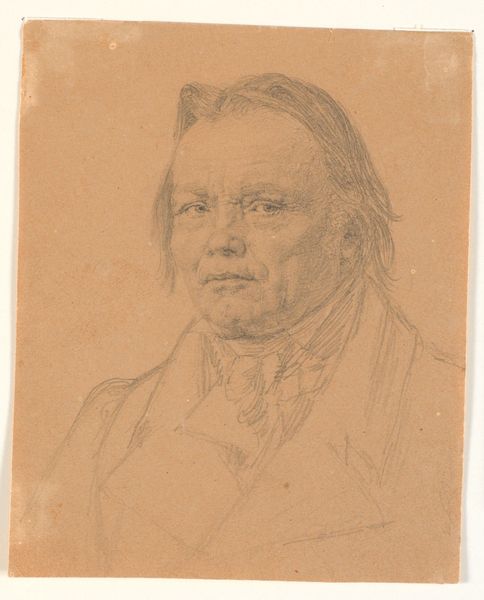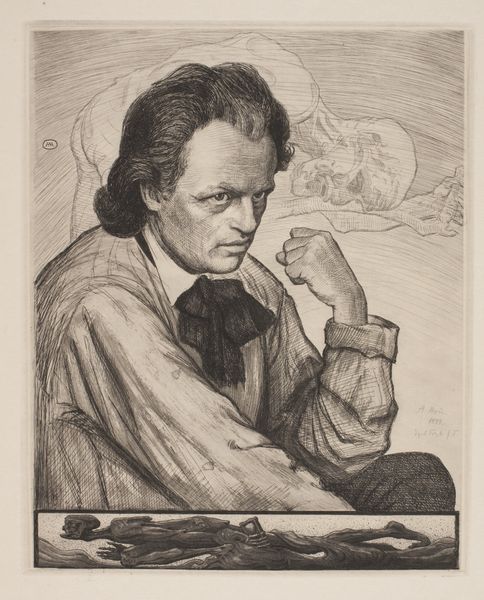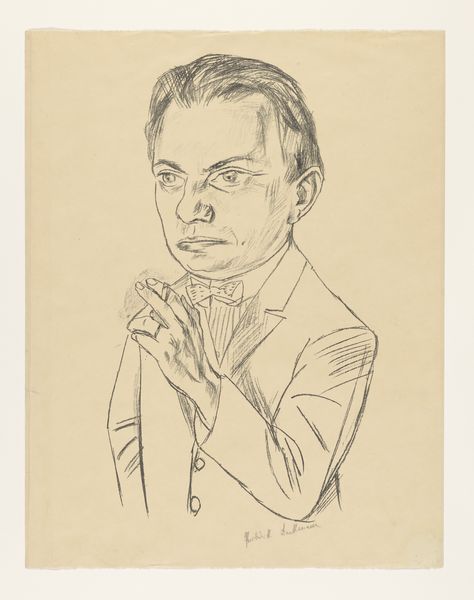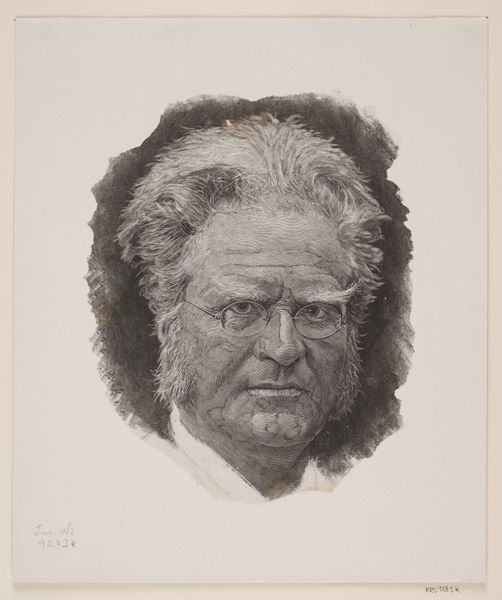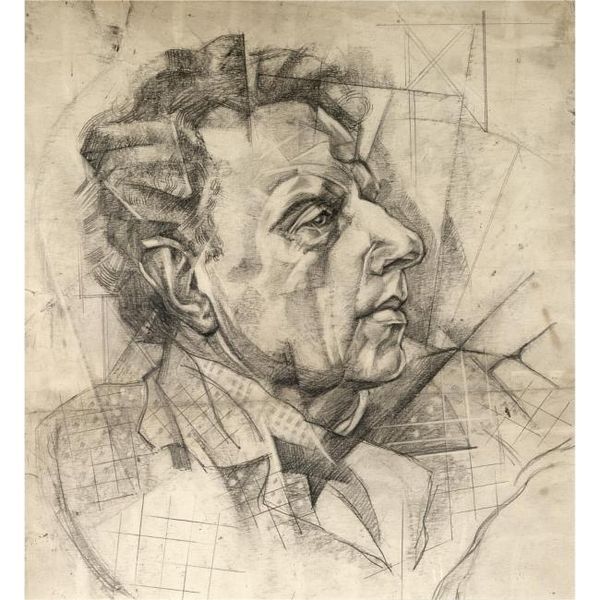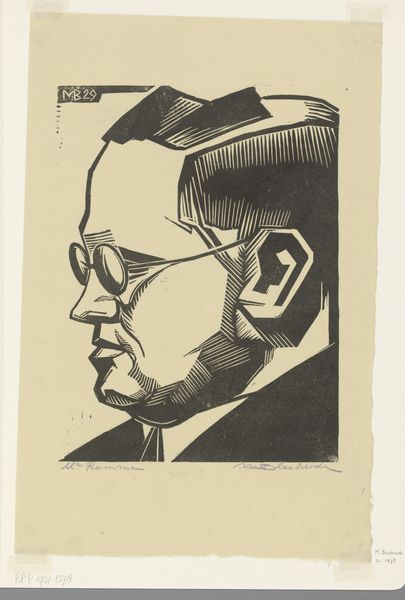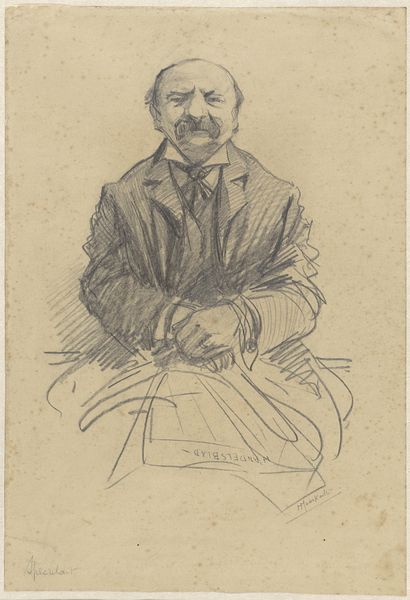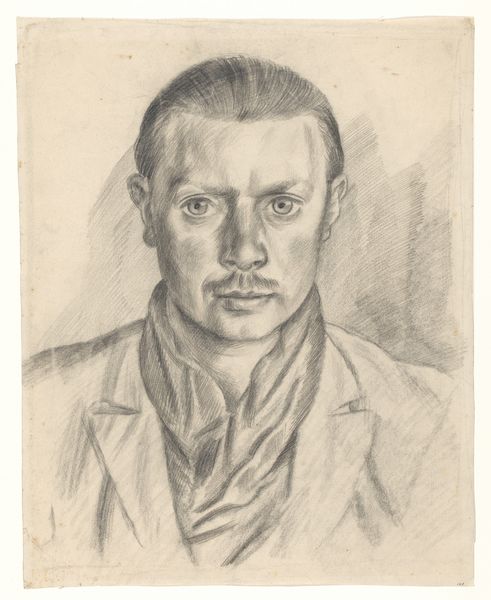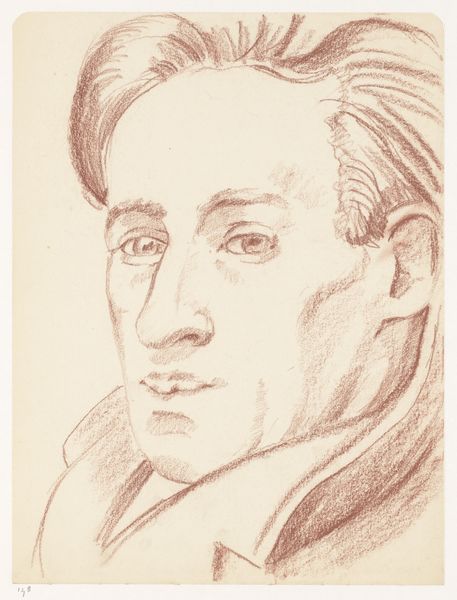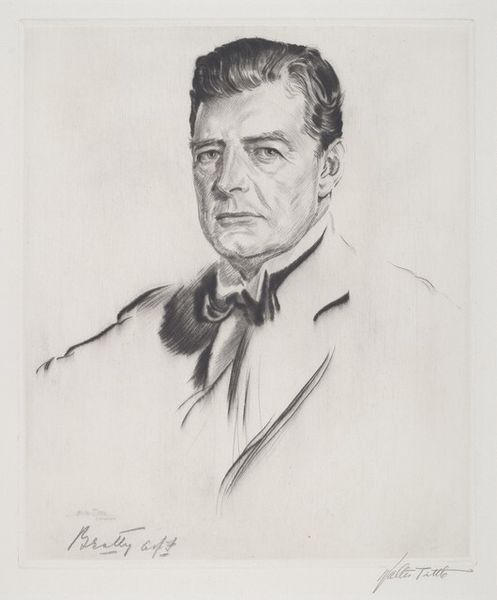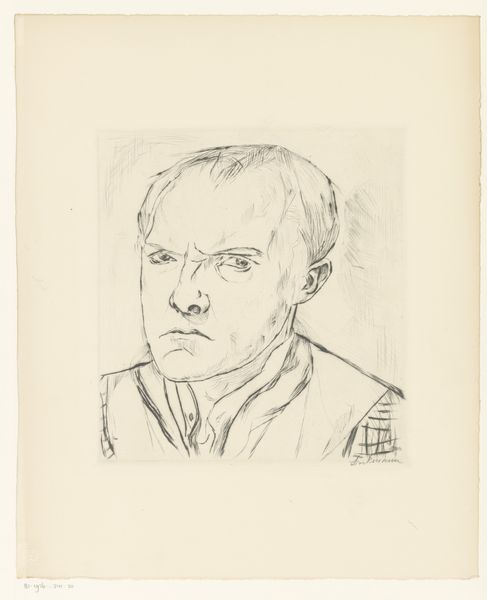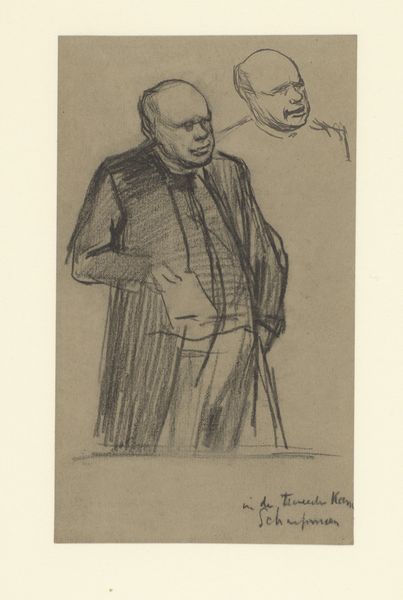
Copyright: Public Domain
Curator: Here we have Hans Thoma's "Bildnis Otto Julius Bierbaum," created in 1893. It's currently housed in the Städel Museum. The piece is rendered in chalk on paper, a rather intimate and immediate medium. Editor: It strikes me as contemplative, almost melancholic. The subject’s pose, hand supporting his head, gives the impression of deep thought. I'm also struck by the limited tonal range. Curator: Yes, the restricted palette really emphasizes the textures – the grain of the paper, the soft blending of the chalk. Thoma was part of a generation grappling with new modes of production in art making as printmaking and lithography was becoming a popular commodity, and portraiture became something different. Editor: It also draws my attention to the linearity of the composition. Look at how Thoma uses line to define form. See the crisp strokes outlining the jacket versus the softer rendering of the face, particularly around the eyes. Is there an interplay of formal and informal at play here? Curator: Precisely. This was an era when German artists were starting to really think about class differences, which informs his decision to choose chalk as the medium since it allows the hand to make decisions directly in terms of how a wealthy man like Otto wants to be seen as more humanistic through more modest materials. Thoma and others used these choices of material, such as paper to communicate social ideas and political messages. Editor: It also is very different from the German Expressionist art being created simultaneously that utilizes lithography and other mass produced techniques to promote social messages as well, making me think there are conservative social leanings that contribute to these specific aesthetic choices. Curator: I think you're correct! As for Thoma's career, the question is not how revolutionary he was, but whether or not he could get enough income from portraits. These pieces made that financial sustainability possible. Editor: Absolutely. The economic realities, access, and the conscious selection of materials tell such a story! A very complex piece, even as a portrait. Curator: A portrait can communicate more than the likeness. It’s also about labor and artistic identity in a changing marketplace. Editor: Precisely! This drawing opens up new perspectives beyond just formal visual appreciation.
Comments
No comments
Be the first to comment and join the conversation on the ultimate creative platform.
